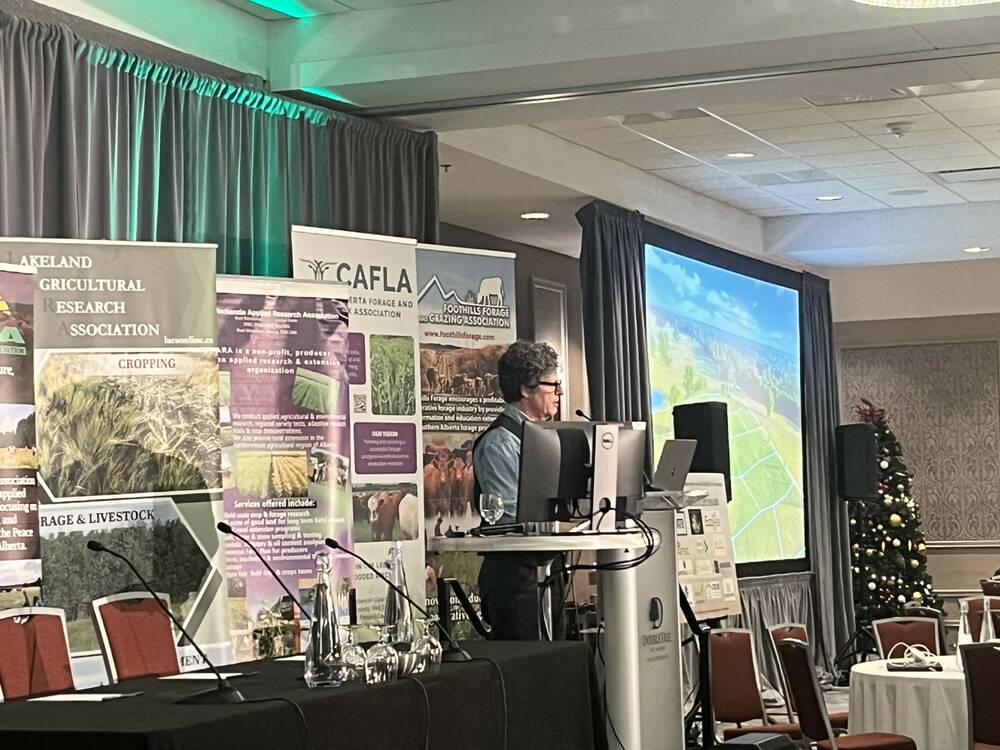Docuseries on Adaptive Multi-Paddock grazing highlights the role of cattle in climate solutions
| 3 min read

Docuseries on Adaptive Multi-Paddock grazing highlights the role of cattle in climate solutions
A new docuseries out of the U.S. examines Adaptive Multi-Paddock (AMP) grazing versus conventional grazing.
Peter Byck, a documentarian and professor at Arizona State University, presented on his recent docuseries, “Roots So Deep (you can see the devil down there)” at the Western Canada Conference on Soil Health and Grazing on Tuesday, December 10. This four-part docuseries focuses on cattle producers in some of the southern states in the U.S. who use AMP practices and their neighbors across the way who conventionally graze. They spoke to 10 farming families in total.
“Our tagline is, ‘a climate change solutions movie that doesn’t even care if you believe in climate change,’ because what we were finding just made good business sense,” Byck said. “And the soils just kept coming up as a problem if poorly treated, and as a solution if properly treated.”
Byck said while looking into this project, they realized that research focusing on AMP grazing isn’t very extensive. So, they decided to pursue this project – not just by telling these stories, but by adding to the science.
As they filmed the docuseries, a large team of scientists conducted the research and looked into soil health, arthropods, greenhouse gas emissions, soil microbiology, water and rancher wellbeing. Their research found that AMP grazing is better overall, especially regarding soil health and greenhouse gas emissions. Because of this improvement in the soil, ranchers who use AMP practices saw an increase in insects, birds and other wildlife, microbes, nitrogen and carbon in the soil.
“The conventional farmers, most of them, anyway, put nitrogen fertilizer down, spend the money,” Byck said. “None of the adaptive farmers put synthetic nitrogen fertilizer down yet, because of their animals and they’re fertilizing from the animals. They had more usable nitrogen in their soil than the conventional neighbor across the fence.”
They found that on ranches using AMP practices, there was 33 per cent more diversity with the insects on their ranch. There was also 25 per cent more microbes, 13 per cent more carbon in the soil on average and 10 per cent less emissions.
“This is a body of knowledge that almost doesn’t exist for all the scientists who are very skeptical that you all are actually making the world a hell of a lot better,” Byck said.
While both AMP grazing and conventional are greenhouse gas sinks, AMP was around four times more powerful as a sink than conventional grazing. This still surprised the research team, which thought conventional grazing would be a source.
“So when thinking about climate change, the biggest bang for the buck was AMP,” Byck said
“If enough farmers choose to adopt it, AMP could be a strong solution to climate change. Farmers could help cool the Earth.”
When they brought this information to the conventional ranchers featured in the docuseries, many expressed interest in trialing AMP grazing on their operations. Most of this research was done in the southern U.S., where they have a longer grazing season. Byck said they are now starting to do similar research in South and North Dakota.
While he isn’t currently planning on doing any work in Canada, he’s hoping to see more research come out of Canadian provinces. He hopes their research can inspire similar things to happen in other countries.
“Our team is very, very committed to working with any science team on earth to make sure that we’re all doing similar methods so that all our data can fit into databases and talk to each other, and so we hope that this will get a lot of other science teams going,” he said.
Byck has done a few other documentaries focusing on regenerative agriculture, such as a series called “Carbon Cowboys” in 2020 and “Carbon Nation” in 2010.


